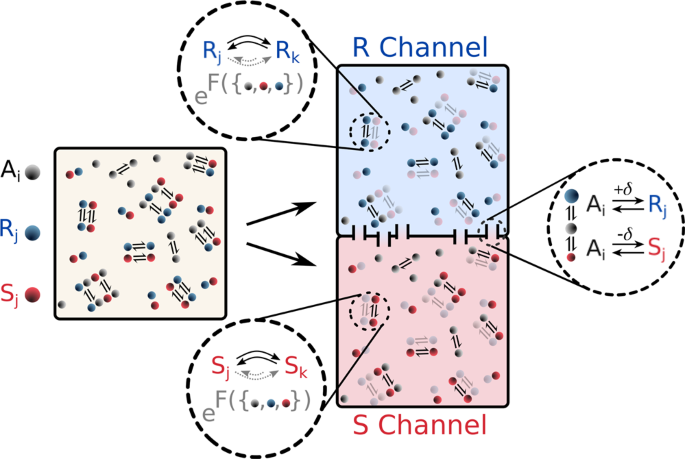生命体におけるキラリティー選択性は、エネルギーハーベスティングを最適化するために自発的に生じる可能性がある Chirality preference in a living matter may arise spontaneously to optimize energy harvesting
2022-04-25 大韓民国・基礎科学研究院(IBS)
・生命は、原始の海の底にある熱水噴出孔のような、エネルギー源が豊富な場所で誕生したと広く信じられている。韓国基礎科学研究所ソフト・リビングマターセンターのツヴィ・トルスティ教授とウィリアム・ピニェロス博士は、原始地球のシナリオを考えて、環境とエネルギーを交換する複雑な化学反応のネットワークを思い描きました。
・研究チームが数学モデルとシステムシミュレーションを用いて、容器内の異なる化学元素の溶液をよく撹拌した状態を再現したところ、驚くべきことに、そのような系は自然に分子の鏡面対称性を破る傾向があることが判明した。
・ホモキラリティへの急激な変化は、環境からのエネルギーをより効率的に取り出すために、反応ネットワークを自己形成していることに由来していることがわかった
・この研究は、ジャーナルNatureCommunicationsに掲載された。
<関連情報>
- https://www.ibs.re.kr/cop/bbs/BBSMSTR_000000000738/selectBoardArticle.do?nttId=21227&pageIndex=1&searchCnd=&searchWrd=
- https://www.nature.com/articles/s41467-022-29952-8
ランダム駆動化学系における自発的カイラル対称性の破れ Spontaneous chiral symmetry breaking in a random driven chemical system
William D. Piñeros &Tsvi Tlusty
Nature Communications Published: 26 April 2022
DOI:https://doi.org/10.1038/s41467-022-29952-8

Abstract
Living systems have evolved to efficiently consume available energy sources using an elaborate circuitry of chemical reactions which, puzzlingly, bear a strict restriction to asymmetric chiral configurations. While autocatalysis is known to promote such chiral symmetry breaking, whether a similar phenomenon may also be induced in a more general class of configurable chemical systems—via energy exploitation—is a sensible yet underappreciated possibility. This work examines this question within a model of randomly generated complex chemical networks. We show that chiral symmetry breaking may occur spontaneously and generically by harnessing energy sources from external environmental drives. Key to this transition are intrinsic fluctuations of achiral-to-chiral reactions and tight matching of system configurations to the environmental drives, which together amplify and sustain diverged enantiomer distributions. These asymmetric states emerge through steep energetic transitions from the corresponding symmetric states and sharply cluster as highly-dissipating states. The results thus demonstrate a generic mechanism in which energetic drives may give rise to homochirality in an otherwise totally symmetrical environment, and from an early-life perspective, might emerge as a competitive, energy-harvesting advantage.



